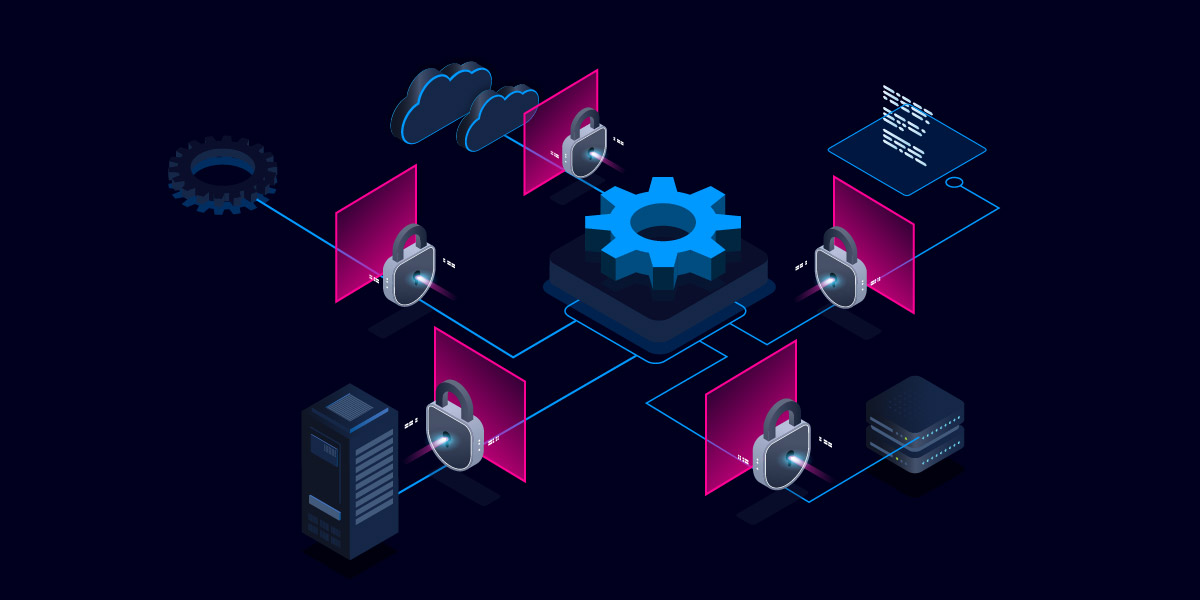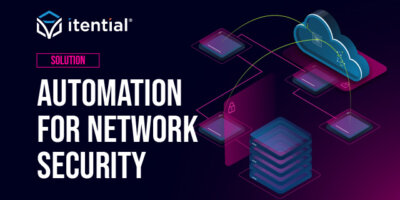Share this

Table of Contents
- Risk, Resilience & the CISO’s Operating Model
- Modern Threats Demand a New Approach to Infrastructure
- How Itential Orchestrates Action & Resiliency Within Enterprise Infrastructure, While Improving Governance
- Leading Enterprises Use Itential to Operationalize Security Posture
- What Executive Security Leaders Need Now
In the last year, I’ve spent a lot of time with CISOs, CIOs, and network security leaders across enterprise verticals from global financial services and critical infrastructure providers. One thing I am convinced of; the topics of discussions and objectives have shifted for these leaders and their teams.
Security leaders aren’t just asking how to detect threats faster. They’re asking:
- How do I govern infrastructure changes across teams and vendors?
- How can I prove we’ve hardened our posture not just once, but every day?
- If something happens, how quickly can we act, and how confident are we in the response?
That shift tells us something important: infrastructure is now a core surface for security control, not just availability.
And in a world where adversaries are exploiting misconfiguration, drift, and policy gaps (not malware), the change in focus and mindset is overdue.
Risk, Resilience & the CISO’s Operating Model
Rich Baich, in Winning as a CISO, makes the case that successful CISOs think like business operators. They prioritize measurable risk reduction, operational repeatability, and alignment to executive strategy.
![]()
CISOs need to run their security program like a business.
I see that mindset increasingly reflected in our most forward-leaning customers. They’re thinking beyond alerts. They’re building security programs that have the control surfaces to act on risk, not just report it.
But that raises a new challenge: how do you enforce governance across highly distributed, multi-vendor, hybrid infrastructure at scale?
This is where I believe infrastructure orchestration has evolved. It’s no longer about speeding up changes. It’s about enabling provable, policy-driven infrastructure actions in real time, across domains.
Modern Threats Demand a New Approach to Infrastructure
Today’s threats don’t follow the playbooks of the past, and neither can our infrastructure strategies.
Recent campaigns like Volt Typhoon and the broader targeting of critical infrastructure sectors make one thing clear: attackers aren’t just breaching systems, they’re embedding themselves. Not with advanced malware, but through persistent access via misconfigurations, unchanged credentials, weak segmentation, and device-level drift.
These threats persist quietly, often for months, and bypass traditional security tooling by operating within the infrastructure layer itself. And once they’re in, lateral movement and impact can happen in seconds.
This changes the equation:
- Manual change control can’t keep up.
- Security controls without infrastructure enforcement are incomplete.
- Visibility alone is insufficient, effective and quick action is what matters.
Leaders now face a new reality: infrastructure is not just a dependency for digital operations, it’s a live security surface. And defending it requires more than hygiene. It requires orchestrated, policy-aligned operations that can be enforced at scale and proven at any moment.
How Itential Orchestrates Action & Resiliency Within Enterprise Infrastructure, While Improving Governance
At Itential, we’ve worked with some of the world’s most security-conscious organizations to help them operationalize control, not just intent.
Here’s what that looks like in practice:
- Hardened Configuration at Scale: Enforce Golden Configurations across routers, switches, firewalls, cloud gateways to ensure secure protocols, proper segmentation, and continuous policy alignment.
- Real-Time Drift Detection & Remediation: Automatically detect config drift or unauthorized changes, trigger alerts, and orchestrate rollback or remediation in minutes.
- Integrated Response Orchestration: Connect with SIEM & SOAR systems to turn detection into automated action and blocking, isolating, or reverting infrastructure elements without manual intervention.
- Governed Change Control: Provide full auditability of every change. Who initiated it, which systems were touched, what policy it followed, and whether it was compliant.
- Cross-Team Visibility: Give security, network, and infrastructure teams a shared control plane that ensures consistency, even across diverse toolchains and platforms.
These are not hypothetical capabilities. Our customers are already deploying them in high-stakes environments.
Leading Enterprises Use Itential to Operationalize Security Posture
Global Financial Services: Automating Threat Containment
This team needed to operationalize “Blocking as a Service” from their SOAR platform across a multi-vendor network. With Itential, they now trigger network-level blocks in real-time, regardless of vendor, without custom code.
➡️ Discover how they automated threat response →
Global FinTech: Enforcing Standard Configurations Across the Enterprise
For this customer, security posture started with consistent configuration. They leveraged Itential to standardize configurations across thousands of devices, reduce variance, and dramatically improve audit readiness.
➡️ Learn how they scaled security →
North American Utility: Proving Compliance Every Day
Faced with regulatory oversight, this customer needed to ensure configuration compliance continuously, not just at audit time. Itential enabled automated validation, reporting, and remediation, helping them meet requirements while reducing operational burden.
➡️ Explore their compliance strategy →
Federal Agency: Modernizing Mission-Critical Networks Securely
A federal agency modernized missioncritical networks across domains, clouds, optical layers, and brownfield services by adopting Itential’s automation and orchestration. They streamlined configuration management, enforced security policies, and accelerated service delivery with greater resilience and efficiency.
➡️ See how they hardened network security and modernization →
What Executive Security Leaders Need Now
As the landscape evolves, infrastructure leaders are being asked to deliver more than reliability. They’re being asked to deliver resilience.
That requires a shift from manual processes and one-off scripts to a secure, scalable, and orchestrated infrastructure governance model.
At Itential, we’re building the orchestration layer that makes that model operational, giving our customers real-time enforcement, full auditability, and the ability to translate risk insights into infrastructure action.
If this is a shift your team is making, we’d welcome the opportunity to share what we’ve learned and how other enterprises and infrastructure providers are already leading the way.
🔒 See How Itential is Helping Security Leaders →
🔗 Reach out to me on LinkedIn →
📆 Schedule Time with Our Team →



